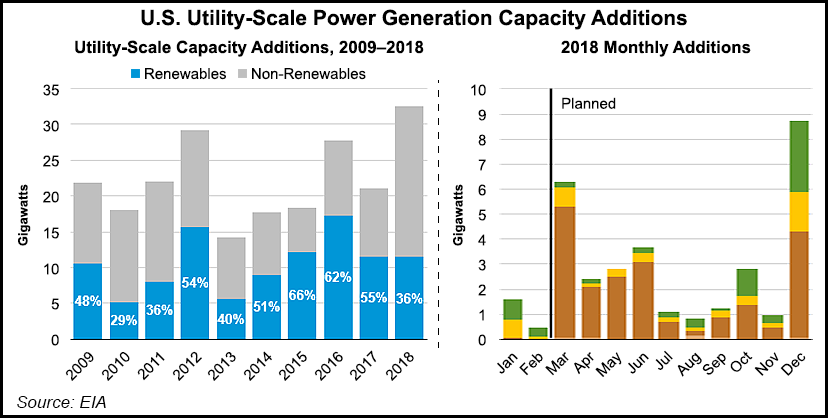Infrastructure | NGI All News Access | NGI The Weekly Gas Market Report
PJM Ready for Hot Summer; More Gas-Fired Power on the Way
PJM Interconnection, which operates the nation’s largest electric grid, said Monday it has ample resources to match the demand expected to be created this summer, when forecasters predict temperatures will be hotter than normal.

The National Weather Service is forecasting above-average temperatures for nearly all of the 13 states and the District of Columbia that are served by PJM and its power generators. PJM planners anticipate electricity use to peak at more than 150,000 MW during the summer months.
Last year, demand peaked at 145,331 MW on July 19, PJM said. The all-time high was 165,492 MW during the summer of 2006.
The generation mix in PJM has changed in recent years. Whereas the system once relied heavily on coal and nuclear resources, coal and natural gas now generate most electricity throughout the service territory, with renewables increasingly contributing more.
The Energy Information Administration (EIA) in a separate note on Monday said it expects 32 GW of electric generating capacity to come online across the country in 2018, more than in any year over the last decade. Although renewables have so far accounted for 98% of the 2 GW added this year, EIA expects about 21 GW of natural gas-fired power to come online in 2018.
If that happens, it would be the first time since 2013 that renewables did not make up a majority of the nation’s capacity additions. About half the 21 GW of gas-fired additions are expected to come online in the PJM market, EIA said. Production from gas-rich states, such as Ohio and Pennsylvania, have driven down power prices and made the fuel more competitive in the nation’s generation stack.
EIA said it expects about 5.2 GW of gas-fired power to be added in Pennsylvania, another 1.9 GW to be added in Maryland and 1.9 GW of additions in Virginia.
PJM also has resources on reserve to cover generation that is unexpectedly unavailable or to meet higher than expected demand. PJM’s required reserve is 16.1% of the forecasted demand level, and the grid operator said it expects to have a reserve margin of more than 28% this summer, or nearly 41,000 MW.
Overall, PJM has 184,010 MW of installed generating capacity available. About 800 homes can be powered with 1 MW.
© 2024 Natural Gas Intelligence. All rights reserved.
ISSN © 1532-1231 | ISSN © 2577-9877 | ISSN © 1532-1266 |
